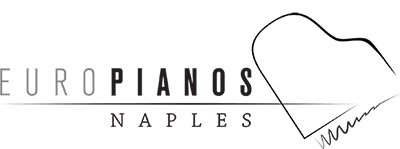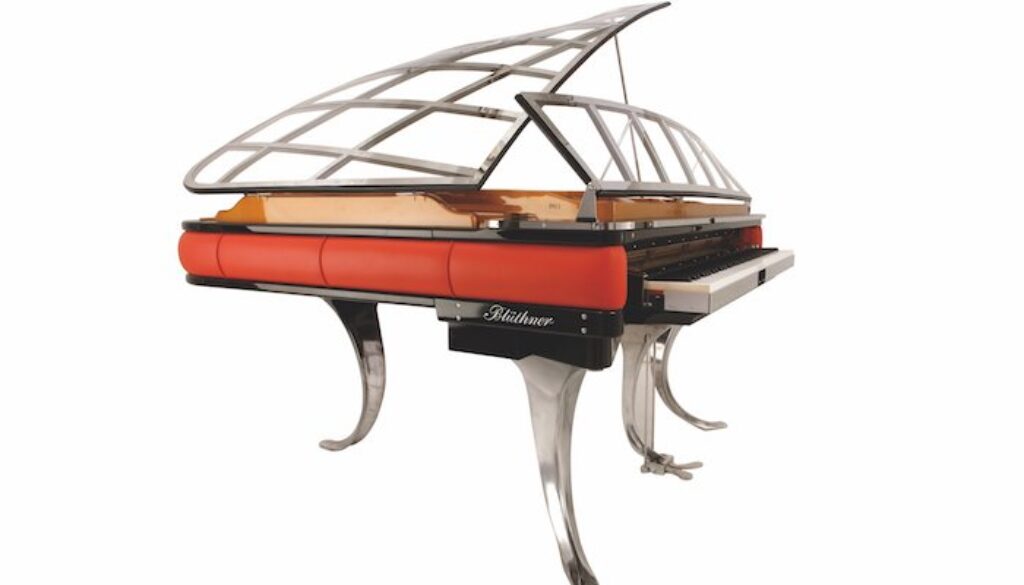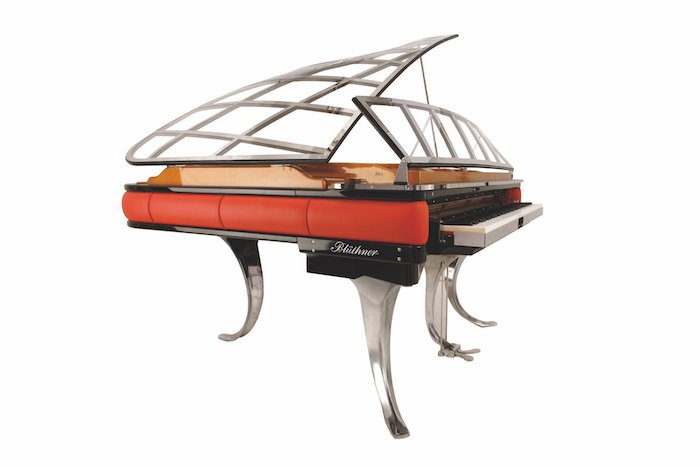Modern Piano Designs
Modern is a word applied to almost anything contemporary that differs from the “old style” of something. So what do we mean when we speak of designs in modern pianos?
At the turn of the century, pianos began to be produced in large numbers by some companies. For example, in 1902, Steinway celebrated making its 100,000th piano and had slashed the cost of mass producing a piano almost in half. In 1904, you could buy a Steinway for $500. Manufacturers had an eye to introducing music lessons in America’s schools. The piano found its way into the homes of the bourgeoisie and was no longer the domain of the aristocracy and the wealthy.
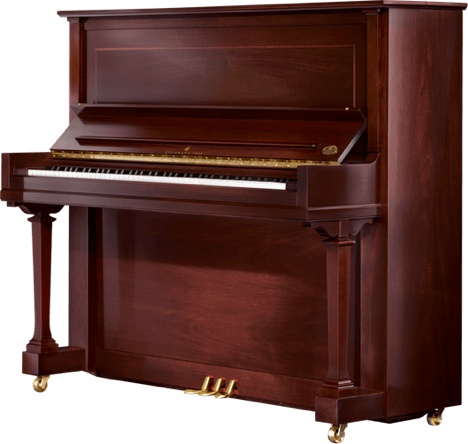
Pianos looked pretty much alike, and only the quality of what was under the lid in the European instruments differed from the mass produced pianos flooding the United States.
With the explosion of Art Deco in Paris in the 1920’s, design took on a whole new meaning. Also called “design moderne,” art deco developed into a major style in the U.S. in both mass produced as well as luxury items. The aim was to create a sleek and anti-traditional modern piano that symbolized wealth and sophistication.
New piano design was no exception. Modern pianos favor industrial metals and the warmth of the wood married in a geometry of form and exquisite detail.
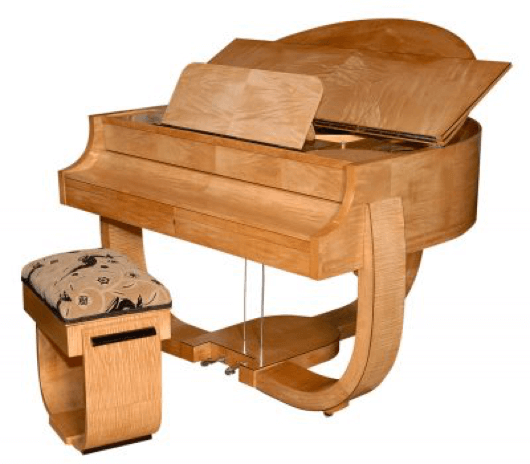
Originating in America, this development and the process of model adaptation prevailed only gradually in Europe and in Germany. The rise of Germany to an industrial power at the end of the 19th century involved its piano-makers in a rise to hitherto unknown and unexpected status and importance. The progressive companies achieved great advances. Firms such as Ibach, Bösendorfer, Schiedmayer, and lrmler, or “newcomers” such as Bechstein and Blüthner exploited the advantages of technological developments.
Today there has been yet another revolution in design. The Europeans have caught up with the new piano design and are creating some of the most innovative and beautiful contemporary pianos the world has ever seen. In addition to their superior, unmatched craftsmanship under the lid, the piano cases are now reflecting the modern pianos today’s customers and designers seek.
Sauter has tipped its hat in honor of Art Deco with the Vivace. Luxuriously nuanced, slender steel legs are connected in the front by a horizontal rod that houses pedal lyra. The geometrical simplicity of the angles is simple yet elegant.
Sauter’s Ambiente is another representation of the purest spirit of Art Deco. The reinterpreted curve of this modern grand piano’s body and lid bring is squarely out of the traditional and into the world of the modern piano. This 7.5 feet concert grand piano has a thin chrome ribbon that outlines the body drawing our eye to the clean shape and is echoed in a chrome line that cuffs the lower legs.
Schimmel, a reputable German piano builder captured the attention of the industry with its futuristic design, Pegasus Long the symbol of poetry (among other things) the winged horse offered inspiration to the artist, and in its modern iteration, breaks the mold of traditional grand piano design to offer that and more to pianists and lovers of art objects.
Bluthner is a company that loves modernity and makes a great show of it with Lucid transparent pianos, sometimes using LED lights and modern art graphics, to create magical futuristic fantasy pianos. But they are no slouch when it comes to shape and form either. The model PH is a perfect example of how au courant one can be and still have superb quality under the lid.
Euro Pianos Naples is among the industry experts who welcome change and the next new revolution. We have designed our own modern baby grand piano called the Aire, which is an economically feasible answer to the modern translucent pianos that are so coveted today.
The standard 4’11” polished-wood piano case can be ordered in black, white, mahogany and walnut colors, and every Aire™ model has beautiful acrylic legs, lid, lyre, key cover and music stand. The clear elements make the piano look as if it’s floating on air, thus the name designated for this little beauty.
Another innovator, Berlin resident, Daniel Barenboim has come out with a modern piano. The Barenboim piano, designed by Belgian instrument maker Chris Maene, and using Steinway components. He is more concentrated on what goes inside the piano than what is on the outside, so his contemporary piano has been designed with straight parallel strings instead of the diagonal-crossed ones of a standard piano. The wooden soundboard veins go in different directions. The bridges, ribs and bracings are specially-designed and the hammers and strings (yellow brass rather than red brass) have been repositioned.
The Barenboim piano reportedly has a different sound and one which must be played in a different way. He said. “It is a different relationship between the tip of the fingers and the key. And the pedaling … the transparency of the sound makes you rethink the use of the pedals.”

Even though the piano industry has basically evolved for centuries, the changes came very gradually until the 20th Century. Now it seems that the piano revolution is here and rapid fire. Not only art case designs being modernized, but innovators like Barenboim are erupting on the scene, trying out new methods, new techniques and seeking the apex of modernity.
So, in closing, I guess what we mean by “modern piano” is the result of piano makers and piano lovers everywhere collaborating to keep the incredible world of music as exciting and inspirational as it can possibly be.
ABOUT EURO PIANOS NAPLES
Euro Pianos Naples is a respected distributor of European luxury musical instruments. The company’s origin dates back to 1965. Euro Pianos represents world renowned brands such as Sauter, and it has recently become a manufacturer of its own acrylic instrument – The Aire. Apart from being a successful retailer, consultant, and entrepreneur organization, Euro Pianos is actively engaged in the artistic and community life of Naples, Florida as an organizer and supporter of musical events throughout the years.
